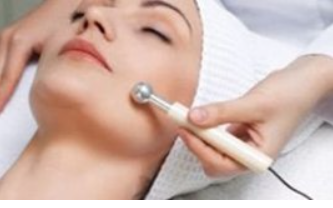Introduction
Laser Treatment

The first lasers used to treat skin conditions occurred over 40 years ago. Argon and carbon dioxide (CO2) lasers were commonly used to treat benign vascular birthmarks such as port-wine stains and haemangiomas. Although these birthmarks could be effectively lightened, a side effect was the unacceptably high rate of scar formation. In the last 20 years major advances in laser technology has revolutionised their use in the treatment of many skin conditions and congenital defects, including vascular and pigmented lesions, and the removal of tattoos, scars and wrinkles. Nowadays there is a wide spectrum of laser and light technologies available for skin resurfacing and rejuvenation.
Laser is an acronym: light amplification by the stimulated emission of radiation.Lasers are sources of high intensity light with the following properties:
Monochromatic, i.e., the light is of a single wavelength.
Coherent, i.e., the light beam waves are in phase.
Collimated, i.e., the light beams travel in parallel.
Laser light can be accurately focused into small spots with very high energy.
This laser is used to treat variety of vascular lesions including superficial vascular malformations (port-wine stains), facial telangiectasia, haemangiomas, pyogenic granulomas,keloids, hypertrophic scars, Kaposi sarcoma and poikiloderma of Civatte.
The pulsed dye laser is considered the laser of choice for most vascular lesions because of its superior clinical efficacy and low risk profile. It has a large spot size (5 to 10 mm) allowing large lesions to be treated quickly. Side effects include postoperative bruising (purpura) that may last 1-2 weeks and transient pigmentary changes. Crusting, textural changes and scarring are rarely seen.
Melanin-specific, high energy, QS laser systems can successfully lighten or eradicate a variety of pigmented lesions. Pigmented lesions that are treatable include freckles and birthmarks including some congenital melanocytic naevi, blue naevi, naevi of Ota/Ito and Becker naevi.The results of laser treatment depend on the depth of the melanin and the colour of the lesion and is to some degree unpredictable. Superficially located pigment is best treated with shorter wavelength lasers whilst removal of deeper pigment requires longer wavelength lasers that penetrate to greater tissue depths.
The QS laser systems can selectively destroy tattoo pigment without causing much damage to the surrounding skin. The altered pigment is then removed from the skin by scavenging white blood cells, tissue macrophages. The choice of laser depends on the colour, depth and chemical nature of the tattoo ink. Two to ten treatments are often necessary.
Thses lasers are mostly used as laser hair removal to treat unwanted hairs.
Read More- Laser Hair Removal
This laser is used to treat acne scars, facial fine lines, wrincles, sun/ photo damage skin and to rejunevate skin. Also it is used to treat warts, skin tags and freckles.
It is used to treat vitiligo (Leucoderma) and psoriasis.
Since laser is a non ionised form of energy, means that the energy level is too low to mutate and to destroy normal cells. It is not radiation so it is totally safe. It is done under local anasthesia so it is painless.
